
This T-Boy writers’ poll is devoted to THE LAST PLACE in the world where you would NEVER want to visit, or revisit. The instructions were simple: it could be a nation, state, region or province, a city or town, or a place; like that fisherman’s bar in Valparaiso, where I was once thrown out of for singing the Sex Pistols’ rendition of God Save the Queen a tad too loud.
By Susan Breslow, T-Boy Writer – The Garden of Earthly Delights? Hell, no!

A travel guide to Myrtle Beach could save on photography costs by simply featuring the hellscape from the Garden of Earthly Delights on its cover to represent the destination. Hieronymous Bosch’s sixteenth-century vision of Hades is a portrait of chaos, gluttony, porcine characters, hideous body modifications, and antagonistic flags. Myrtle Beach features all of these… plus miniature golf and a beach whose water turns polluted brown after storms.

We drove into this redneck Riviera hotspot from the south, coming up from sedate Charleston. We had no way of knowing that it was Bike Week (held every May, it turns out). Harley-Davidson owners decked out in black leather with silver studs and their similarly appointed, slutty-looking molls (even those old enough to know better) preened along the main drag beside thousands upon thousands of shiny parked hogs.
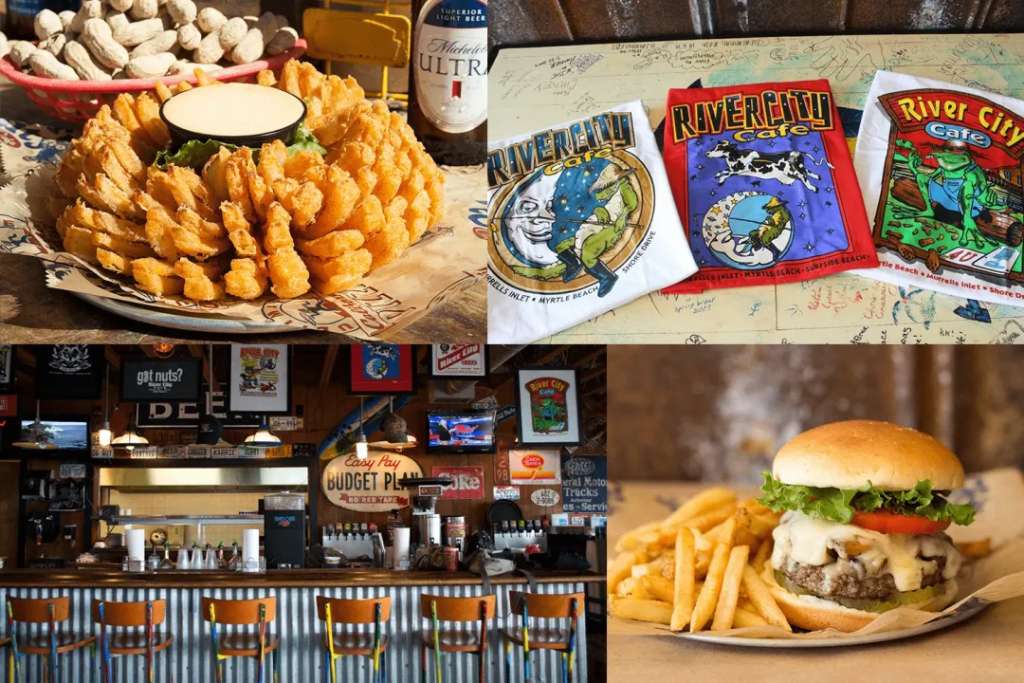
Behind them, a maelstrom of marquees for bars and fast-food joints where “fried” is the daily plat du jour. These troughs stand alongside souvenir shops where skeevy-looking, gray-bearded riders of both sexes have no problem buying and wearing black T-shirts that boast, “Born to be Wild.”
Had enough of this American Grotesquerie? Myrtle Beach: For a good time, drive on by.
By Richard Carroll, T-Boy Writer – The MV Sundancer, on Alaska’s Inside Passage
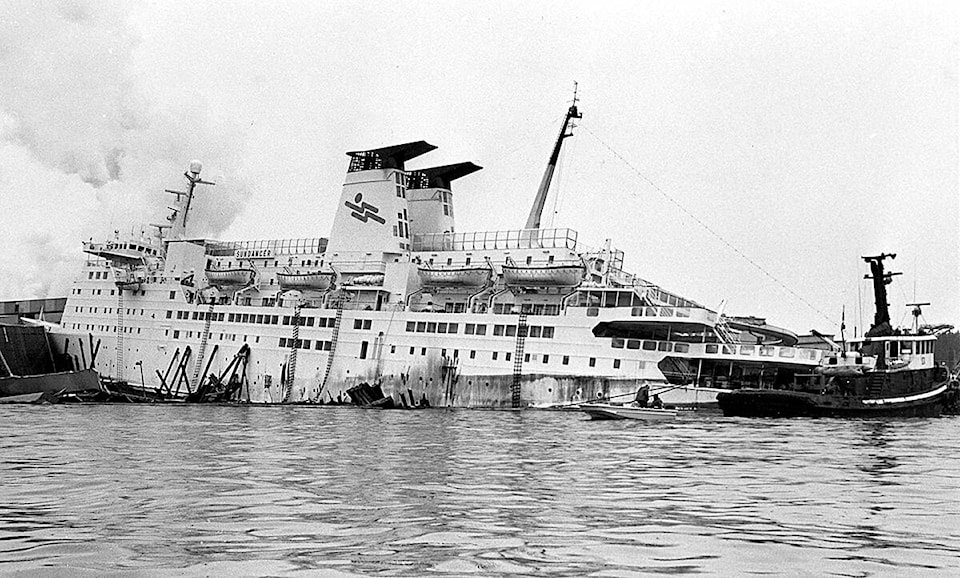
I was on a cruise with my mom and I booked the MV Sundancer to Alaska’s inside passage and upon reaching the Seymour Narrows, it sank. This specific cruise is the last place I would want to return too. It was June 29, 1984, and at 8:30 p.m. I was in the main lounge interviewing a crew member while a small band was performing show songs to a few of the 787 passengers sitting about enjoying the moment, when suddenly there was a heavy jolting thug that vibrated the ship. The band instantly stopped playing, and the ship seemed to be quietly floating dead in the water, then another whack and the lights went out, fluttering dimly and the smell of oil permeating the air. The Canadian Pilot had miscalculated our position and the Sundancer had slammed twice into Maud Island near Campbell River, an attractive town with wonderful residents.
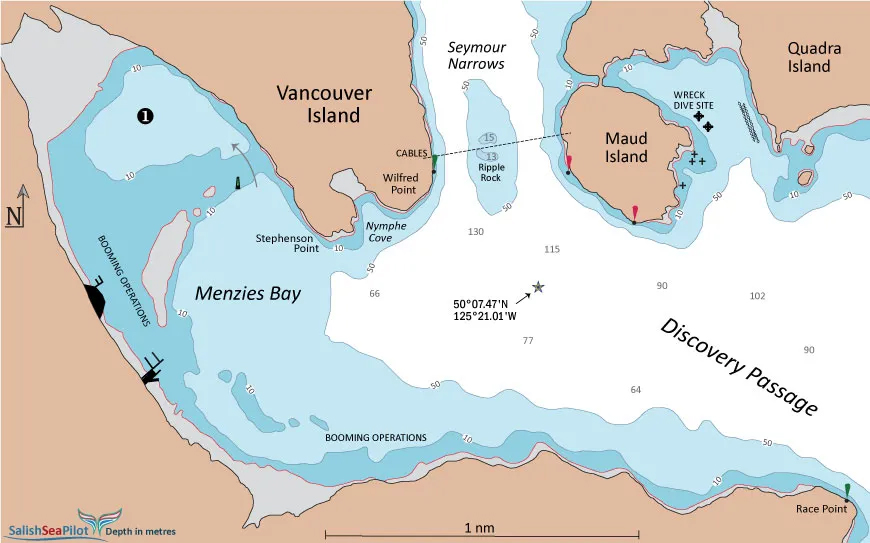
The ship was quickly taking on water from a 32-foot gash on the starboard side. I rushed to my cabin where my mother was getting ready to retire. I said, “Mom, we have a problem, and you need to get dressed and put on a life jacket.” Water was seeping into our cabin, and it seemed like it took mom forever to get dressed, I could hear people running in the corridor and shouting. I said, “Forget the panty hose,” which was a tremendously slow process with only one foot in place, “Just slip on a dress, we have to get up to the top deck ASAP.” Finally, we departed the cabin and made our way up the dark stairway, sloshing through sea water, past panicked passengers, some who were frantically crying, to the top deck that was tilted to a sharp downward slant.
Garbled messages from the captain were useless as were the lifeboats that were banging against the side of the ship. The Sundancer made it to the Elk Falls Mill pier at Campbell River with almost complete chaos on the ship. It seemed, and not a generalization, that most of the young passengers panicked, while the older ones were calm and quietly standing on deck with their life jackets. A young couple on their honeymoon were hovering near the railing, when the husband hopped atop the rail facing the water yelling “I’m not going down with the ship!” My mom grabbed his shirt shouting, “Get down from there young man!” His wife was aghast. She was looking at him in disbelief and must have been thinking, “Is this what I just married?”
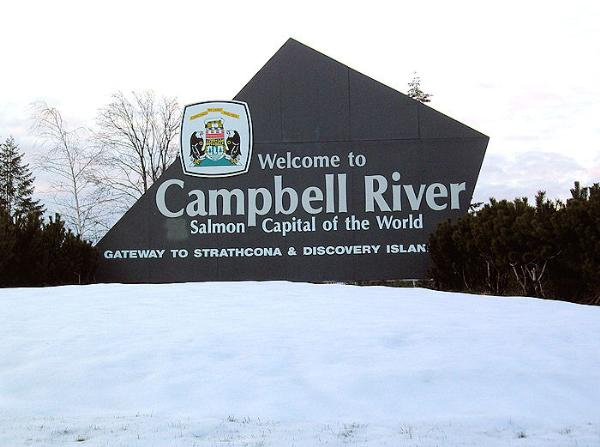
Campbell River, noted as “The Salmon Capital of the World,” was incredible in organizing a Cherry Picker to host off the elderly passengers like my mom, and were a great help overall. The ship had destroyed most of the pier, and, not by choice, I was the last passenger off the ship climbing down a rope ladder into a tug boat with a young boy from Puerto Rico who had become separated from his parents. As he clutched my arm, he told me he didn’t know how to swim. On land at the Red Cross Help Center, the Campbell River people gave the passengers clothes, blankets, hot drinks, good thoughts, and thankful that no one on the cruise died. The young man who wanted to jump ship and leave his new wife behind was strolling around shirtless sipping a cup of coffee, his distressed wife staring at him with sad eyes. Mom came up to her and with a big hug said, “Honey, give him a chance, maybe he’ll be okay.” We flew back to Southern California with no luggage. Years later I discovered my late mother’s collection of matchbooks and spotted the Sundancer souvenir from her first and only cruise, a memento I keep on my desk to this day. Inside she had inscribed, “Went on cruise with Richard. Ship sunk.”
By Peggy Polinsky, T-Boy Writer – Chaos at Versailles
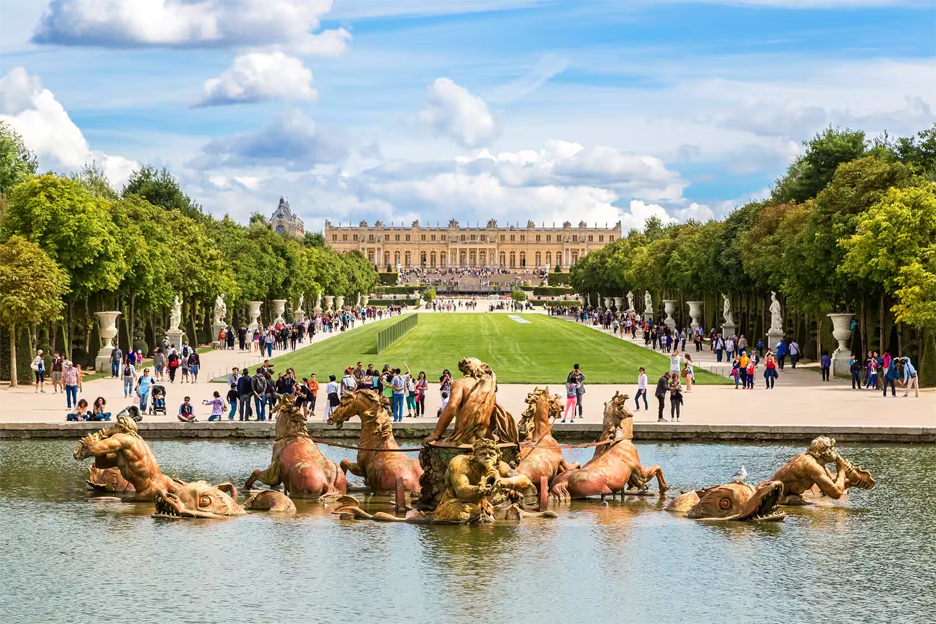
Yes, chaos at Versailles, in this day and age. Unfortunately. So sad. When I first visited Versailles in 1965 with two friends (we had just graduated from college), there was an orderly line to enter the castle. Then we just walked around and saw everything under the guidance of our friend who became a successful travel agent. It was a beautiful, memorable experience. And then we visited the gardens as well – just strolling through.

The next time I went was in 2019 with my husband. We signed up for a tour. Connecting to the tour was frantic. Upon entering the palace, we discovered that there were hundreds of tours with thousands of tourists. There were so many people that the only time you could really see anything was if you looked up. But, although beautiful, not everything is on the ceiling.
And it was so loud. So, we made it through and got outside where we could see the outstanding gardens at a distance. We knew we couldn’t walk that far. No one had told us about the trams that will take you through the gardens. By then it was too late in the day. So, we made it back to the train and then the bus that took us back to our hotel. Determined not to ever do that again.
By Raoul Pascual, T-Boy Webmaster – The Horror Stories of Iran
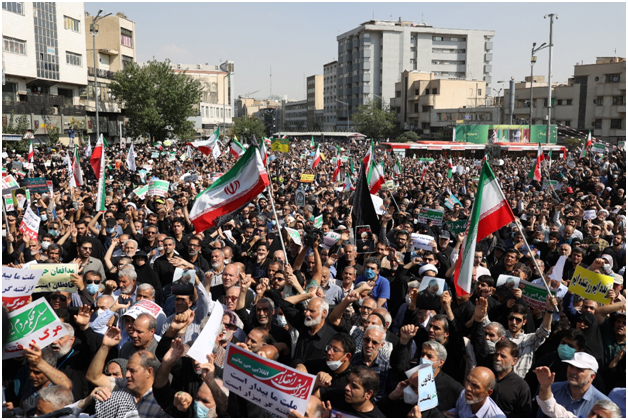

I would never ever want to visit Iran. Because of the horror stories of head chopping and degradation of women and infidels, this is the country I would avoid at all cost (unless I want to leave this earth prematurely). It’s a Hotel California trap – you may enter any time you want but you will never leave… at least with your organs in one piece.

The Ayatollah Khomeini
“Ayatollah Ruhollah Musavi Khomeini, (May 1900 or September 1902 -June 1989) was an Iranian Islamic revolutionary, politician, and religious leader who served as the first supreme leader of Iran from 1979 until his death in 1989. He was the founder of the Islamic Republic of Iran and the leader of the Iranian Revolution, which overthrew Mohammad Reza Pahlavi and ended the Iranian monarchy.
Khomeini was Time magazine’s Man of the Year in 1979, and has been described as the “virtual face of Shia Islam in Western popular culture,” where he was known for his support of the hostage takers during the Iran hostage crisis, his fatwa calling for the murder of British Indian novelist Salman Rushdie, and for referring to the United States as the “Great Satan” and the Soviet Union as the “Lesser Satan.” Following the Islamic revolution, Khomeini became the country’s first supreme leader, a position created in the constitution of the Islamic Republic as the highest-ranking political and religious authority of the nation, which he held until his death. Most of his period in power was taken up by the Iran-Iraq War of 1980-1988. He was succeeded by Ali Khamenei on 4 June 1989.” – From Wikipedia.
Muslin Woman in the U.S. Today
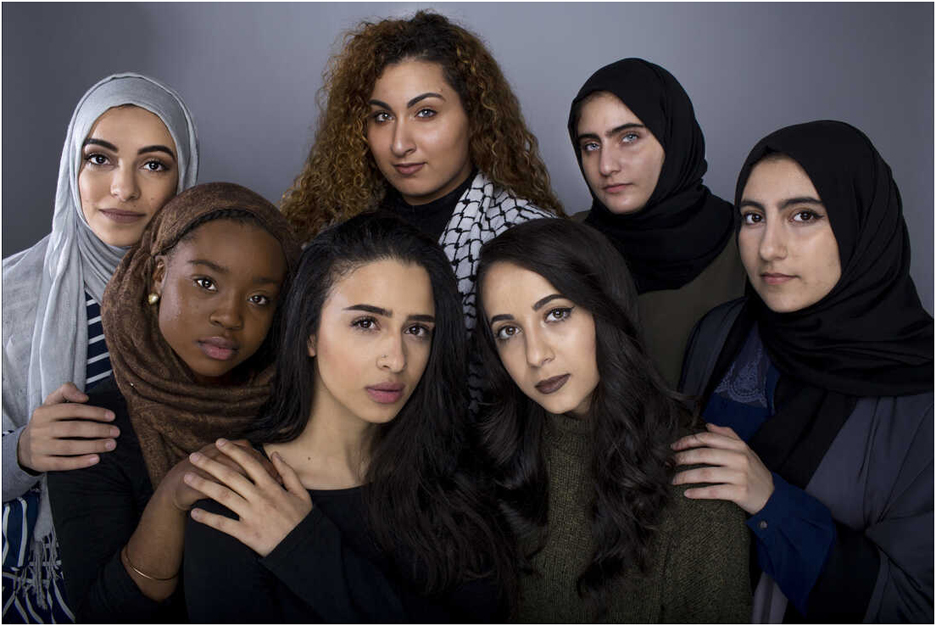
Comment by Ed Boitano: Recently I met with a Muslim woman from Tehran, who spoke of her dislike of American liberals. I began to understand that her disdain stemmed from American liberals’ support of Iran’s Holy Muslim Quran, and that it was none of our business what goes inside of their country.
As the Muslim woman from Tehran continued with her tirade, she wished that U.S. liberals and conservatives alike would bond together and try to abolish many of the words in the Iranian Constitution, whose language, based on the Quran, spoke of misogyny, inequality and abuse of human rights. And whose words led to a state sponsored theocracy, the exacty opposite of what many of us in the U.S. pretend not to believe today.
By Ringo Boitano, T-Boy Writer – Hoodwinked in Daufuskie
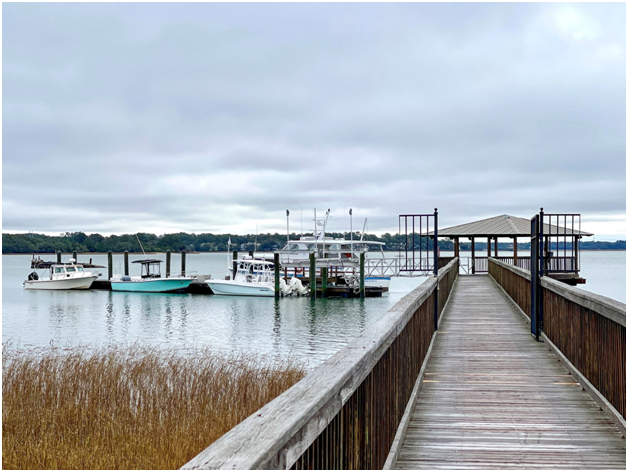
As our little ferry boat graced the salt marshes of Hilton Head Island, surrounded by a world of sea grass in South Carolina’s Low Country, we were on our way to the island of Daufuskie Island in search of Gullah history. The ferry ride served as our introduction to our tour vendor, Tour Daufuskie. Little did we know that this very ferry ride would be the high point of our tour.
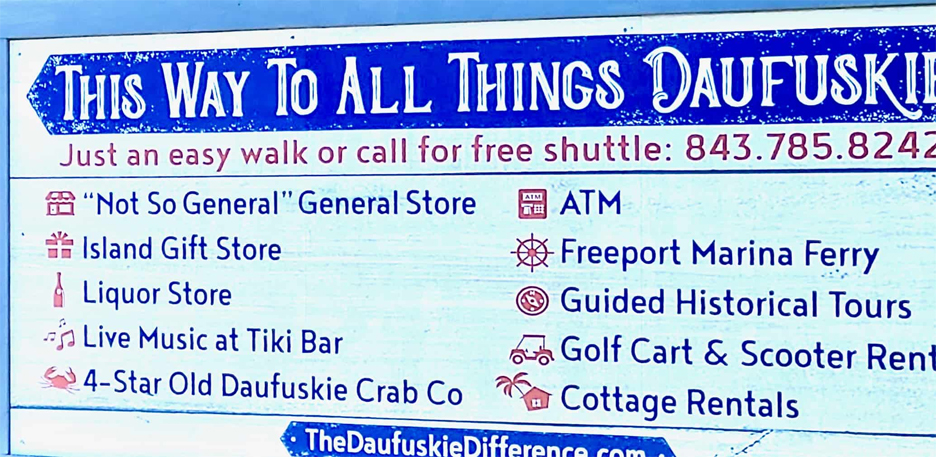
I recall the words on Tour Daufuskie’s welcoming sign, but noticed another on the ferry dock landing, which said, “No food Allowed.” But, before I booked my tour with Tour Daufuskie, I should have remembered the sacred verbal sign, which is known to all travelers as they journey throughout the world’s land: “Investigate Tour Operator Before Booking.”
My photographer and I were escorted by a Tour Daufuskie employee to a row of golf carts by a general store. His scripted remarks included “If you want any food you better get it here, ’cause this store is the only place on the island you can get it” (later we found an independent grocery in the island’s center), and “this is our BEST golf cart on the island… I know ’cause I just rode it!”
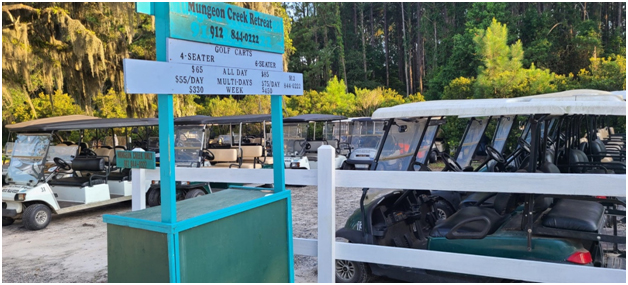
As we rode the BEST golf cart on the island, we were more than happy to leave the Tour Daufuskie man; and, with map in-hand of historic Gullah sites, we excitedly navigated our golf cart down the dusty dirt road in search of the past culture of these remarkable people who had once called Daufuskie their home. But our excitement was tempered, due to our golf cart, lumbering along at half speed. We returned it to the less-than-embarrassed Tour Daufuskie slicker, who offered no explanation, and were given another, which broke down ten minutes later. This time, a more qualified man arrived at the spot of our breakdown, and said we should have never have been assigned the first two carts and gave us another that actually worked.
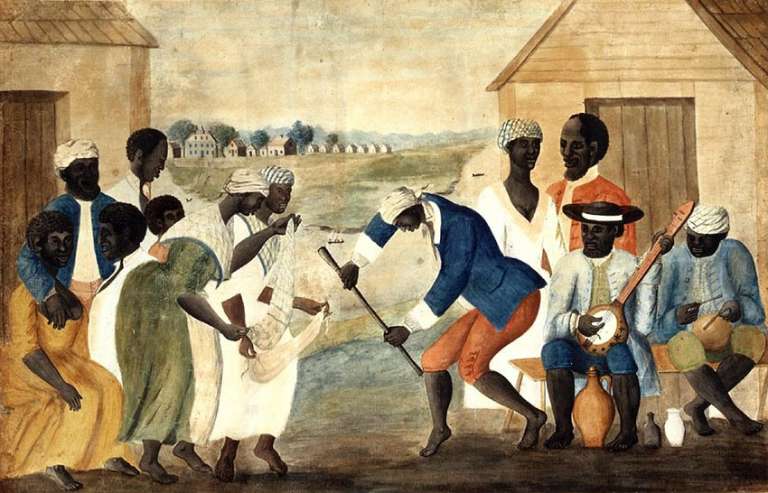
But, first, a little about the Gullah; after all, that was why we were there. Research told me that slave traders brought Africans from Sierra Leone to the chain of Sea Islands for their expertise in planting, harvesting and processing rice. During the 1700s, American colonists in the Southeastern U.S. realized that rice would grow well in the moist, semitropical country bordering their coastline. But the American white plantation slave owners had no experience in the cultivation of rice, so they purchased slaves with a preference for Africans from the “Rice Coast” or “Windward Coast,” the traditional rice-growing region of West Africa. The enslaved people became known as the Gullah (Gul-luh), perhaps derived from Gola, a tribe found near the border of Liberia and Sierra Leone. Daufuskie itself: translated to “pointed feather,” a name attributed to island’s earliest inhabitants, the tribes of Muskogean stock.
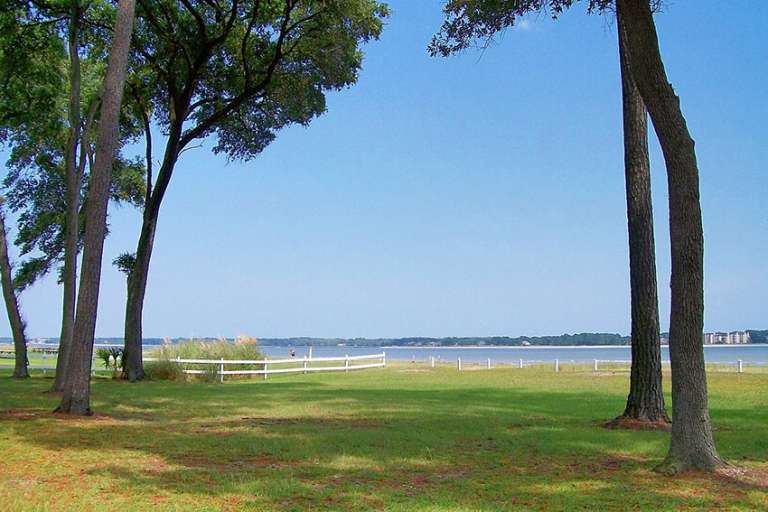
I read that when the U.S. Civil War commenced, white slave owners hurriedly abandoned their plantations and slaves, and fled to the mainland, while some Gullah were actually unaware of the war and their eventual freedom from slavery had finally ended. Due to this isolation, the Gullah were able to preserve more of their African cultural heritage than any other group of African-Americans. They spoke a unique Creole language and maintained a life similar to that of Sierra Leone. I was anxious to meet a Gullah person and hear their unique language in conversation, and, who knows, maybe even a bit of folklore.
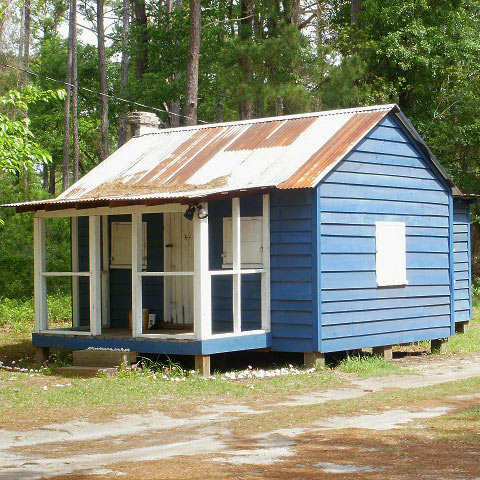
So, we were now officially off on our expedition in search of the Gullah, though it did take awhile. The map turned out to be fairly accurate leading us to the First Union African Baptist Church, listed as a historical landmark, followed by Maryfield School (circa 1930), the primary school for the Gullah children. This is the school where author Pat Conroy taught in the late 1960s, later documenting his experience in the novel, “The Water is Wide.” Transportation only began in 1950, so the children must have had a long walk in the woods, in particular with long walks without shoes. The small Billie Burn Historical Museum was next on our agenda, with Ms. Burn considered the first true Daufuskie historian, having documented life on the island’s past in her book, An Island Named Daufuskie.
The afternoon closed, after quick looks at the Maryfield Cemetery, the largest Gullah cemetery on the island. As we returned to the petite ferry, it was obvious that we had been misled and even lied to by Tour Daufuskie employees. Nevertheless, we were happy to see and learn all we did. But, were still annoyed that we had been taken advantage of, and wondered why such a company like Tour Daufuskie could even exist. It occurred to me that South Carolina is one of the least regulated states in the U.S., a state where the establishment of forming workers’ unions was once illegal. Curiously, the Sea Islands were the first place in the South where slaves were freed. And it made no sense to my Yankee mindset, for at the beginning of the U.S. Civil War, 96% of the population of South Carolina were African-Americans who wore the chains of slavery.

But the experience did serve as a life lesson, a lesson I had ignored; never book a tour with a vendor until you’ve thoroughly, independently, researched them and the specific tour. If not, there is a chance you might be disappointed. In conversation with others on the ferry ride back, it became clear not one of them had even a hint about the culture, let alone the existence of these proud and historic people, the proud and historic people simply known as the Gullah of Daufuskie Island.
By Fyllis Hockman, T-Boy Writer – The Most Difficult Trek We Had Ever Experienced
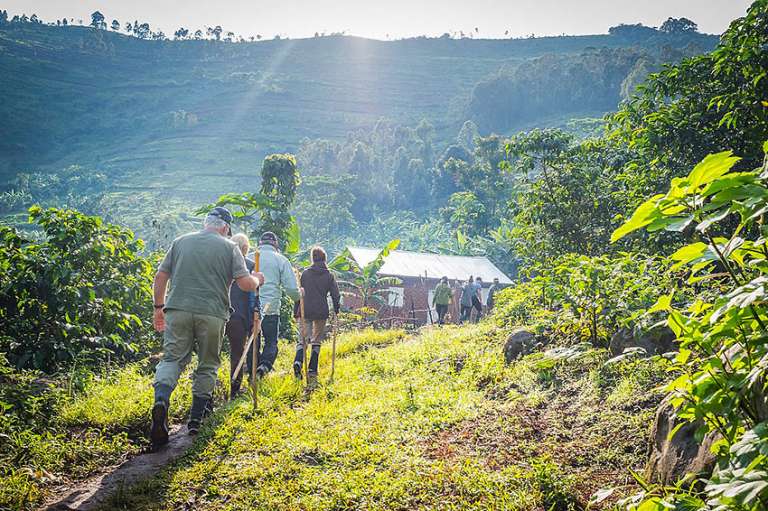
The eight of us huddled together, warned repeatedly to stay close and keep quiet. A soft cough escaped from one of our group, and the guide looked immediately askance. Coughing and sneezing were very much frowned upon. If you’re scraped by a stinging nettle, don’t even think about screaming – a usually fitting response. Sharing 98.4 percent of our DNA, the elusive mountain gorillas – whom we were seeking at the time – are very susceptible to human-borne illnesses and more gorillas die from such infectious diseases than from any other cause. We were carriers and they had to be protected from us. And this was before the pandemic!
Still, eight humans a day are allowed to visit these gentle giants, as they are known, for no longer than an hour, as we did during a recent visit to Uganda as part of an ElderTreks tour.
This is not exactly a drive-by photo op. With a vigorous (to say the least) trek of 1-7 hours, depending upon where the gorillas are that day, you have to REALLY want to see them. But even with visitation restricted to an hour, it is usually well worth the effort. But more on that later.
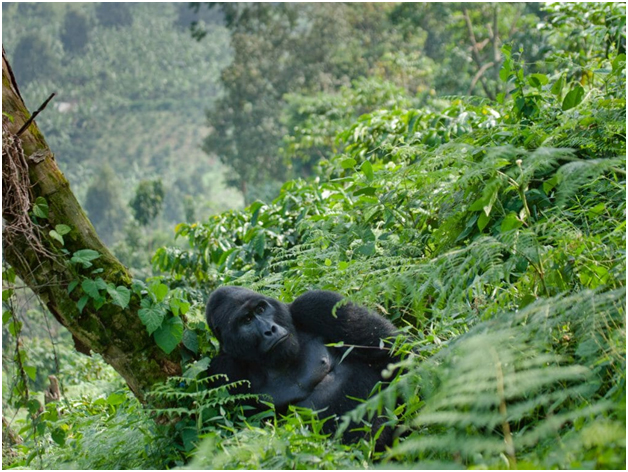
There are about 880 mountain gorillas in the world with almost half located in Bwindi Impenetrable Forest, a World Heritage Site clearly worthy of its name, in southwestern Uganda, an 18% increase over the last census due to increased conservation efforts, education and veterinary care. This is very good news.
The prelude to the hike is itself intimidating. Treks range from 1-7 hours according to the promotional material, with a maximum increase in elevation of 500 meters. Wear good hiking boots, don gloves for the nettles, a walking stick is mandatory, bring lots of water, don’t get closer than 25 feet – and remember these are wild animals.
Anticipation mixed closely with apprehension as every person on our tour, whether expressed aloud or not, felt “I hope I can make.” The tale I’m about to tell about my travel-writing husband Vic and myself is not the norm. The tale for the other eight members of our Elder Treks tour, from whom we were separated because of the limit of eight people to a gorilla trekking group, is the opposite extreme – also not the norm.
Boy, were we ever wrong. The trek was somewhat strenuous from the beginning, with steep climbs and slippery descents, traversing narrow ravines, but we were holding our own, feeling pretty good about ourselves. Until we entered the forest. And there was no semblance of a trail at all. The guides were trail-blazing with the help of machetes deep into the clearly “impenetrable” woods, the rocks, roots and brambles beneath our feet not even visible because of the thick underbrush. With walking stick in one hand and the porter’s hand in the other, I tried valiantly to move forward though at times the porter was literally dragging me up the precipitous slopes or keeping me from sliding down sheer declines, twigs and vines attacking from both sides of the non-trail, entangling my feet and arms to further impede progress in either direction. At times, I thought either my arm would be pulled off by the porter or my legs by the vines.
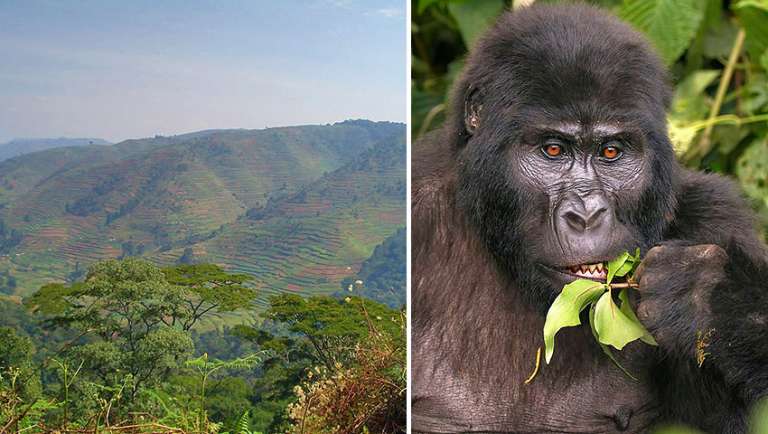
All the while, I couldn’t help but feel guilty for thinking to myself how little at that point I cared about the gorillas and how much I was worried about surviving the grueling trip back. I was seriously considering becoming a modern-day, Dian Fossey and staying with the gorillas, assuming we ever reached them, just to avoid the return trip.
I wish we could say the trip was worth it but by the time we finally dragged ourselves – or more appropriately – were dragged by the porters to the designated area where the gorillas had been, they had left. This is just not what you want to hear after what most of us on the trek agreed was the most difficult thing we had ever experienced.
By James Boitano, T-Boy Writer – Athens’ “Ammonia Square”
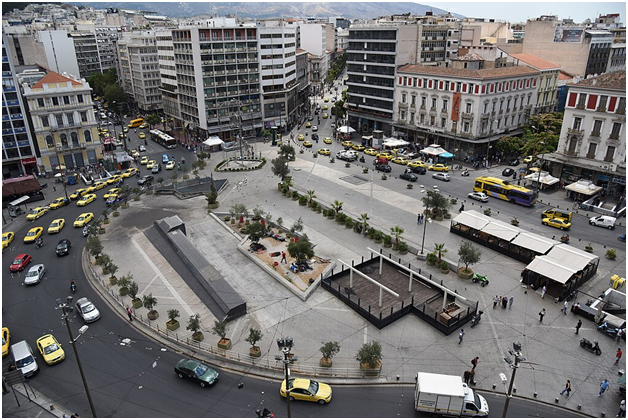
Athens, It’s not a terrible place: it’s just not at all that remarkable. It’s a big gritty working city that happens to have become the capital of Greece by default in their Ottoman wars of independence. I remember as breathing in all the auto fumes trying to catch a taxi on Omonia Square, we jokingly called it, “Ammonia Square.” Athens is a busy and charmless city which I rate as the most overrated capital city in Europe. There are many more lovely places to visit in Greece. But I will say it its defense: the view of the Acropolis rising above the city is its finest feature. But I never need to go back after seeing it once.
By Ed Boitano, T-Boy Editor – Beneath the Surface of Coeur d’Alene

The French name Coeur d’Alene when translated into English means, “Heart of an Awl.” Once, when I was traversing the pleasant small city streets, I remembered what “Coeur” meant, but had never heard of such a thing as an “Awl” before. Later I learned, it is a thin, tapered metal shaft, coming to a sharp point.
But then yesterday it hit me, and it hit me sharply to my core; when I read that on March 28, 2024, a Utah women’s college basketball team was seen strolling down Coeur d’Alene’s sidewalks from their sponsored NCAA Tournament hotel. They were there for fun, food and relaxation, in preparation for a NCAA Tournament game to be played later in Spokane, WA. A few passing cars packed with locals shouted obscenities at the University of Utah’s Women’s Basketball Team. But it’s not unusual for a city to mock a visiting team, but was there something more below Coeur d’Alene’s emotional surface? And then, local and national news broadcasts said that it was truly something much more.
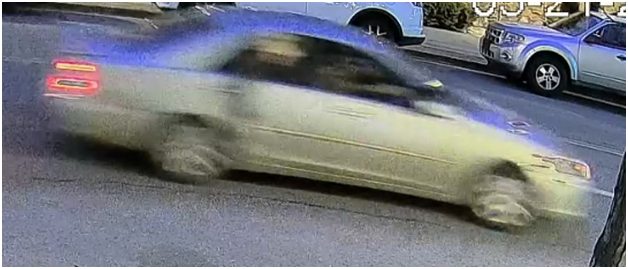
SPOKANE, Wash. (AP) – “On Thursday, the Utah team and another women’s team staying at the Coeur d’Alene Resort were walking to dinner at a restaurant on Sherman Avenue when the driver of a truck displaying a confederate flag began yelling the N-word and other racial slurs at members of the basketball teams, cheerleaders, the band and others in the traveling party.”
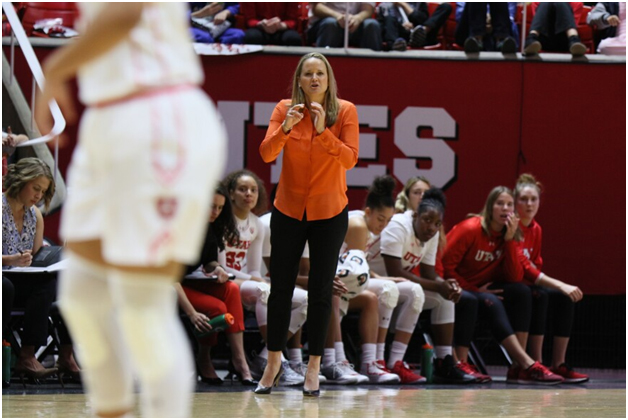
Utah head coach Lynne Roberts said, “Her team experienced a series of hate crimes after arriving at its first NCAA Tournament hotel in Coeur d’Alene, Idaho.”
“For our players and staff to not feel safe in an NCAA Tournament environment, it’s messed up,” continued coach Roberts.
“It’s getting to the point where people of color can’t even travel anywhere,” Spokane NAACP President Lisa Gardner said. “This is starting to be reminiscent of the ‘ 60s.”
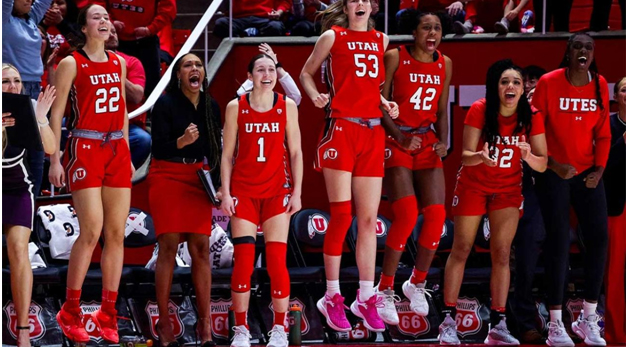
And it really did become something much more worse than I had thought…
“Officials in Idaho tried to apologize Tuesday for the racism the University of Utah’s women’s basketball team faced in Coeur d’Alene before an NCAA tournament game at Gonzaga.
Yes, but: “Right-wing disruption shuts down Idaho’s apology for racism targeting Utah during NCAA tourney.” – Axios Salt Lake City.
And, the reason: “They abruptly shut down the news conference when a far-right operative began shouting questions at a human rights advocate.”
Why it matters: “Northern Idaho has become a hub for right-wing extremist groups.”
The latest: “Investigators in Coeur d’Alene are working with the FBI to determine which, if any, criminal violations occurred,” Hammond and police chief Lee White said at the Tuesday news conference. Idaho law forbids “malicious harassment.”
The Ridiculous and the Sad
Coeur d’Alene, like Idaho, is renowned for its recreational components where one can hike, bike and even ski right out your door. But it also has a long history of hate groups, white nationalists and exclusiveness, where realtors often market their properties for “likeminded”‘ transplants who can no longer bear to live a life in urban centers, such as San Francisco, Portland and Seattle. And security is essential, particularly in some cities and towns, for many properties are marketed as “bunker homes.” But, what for: THE pending doom of the Apocalypse? OR Muslim terrorists’ attacks? OR Martian invasions? OR you and me who happen to live in an urban centers outside of the state? I’m still not sure why, but did notice on my last trip to Idaho, that locals, often transplants, are fond of echoing Fox News talking points via Trump News Social, such as “Liberal urban elitists.” I was happy, though, that “Cappuccino Liberal” didn’t seem to work out, for it’s still my favorite coffee beverage wherever I’m about.
Will I ever revisit Coeur d’Alene and Idaho again? My reply is, perhaps not.
Sun Valley Resort: America’s First Destination Ski Resort
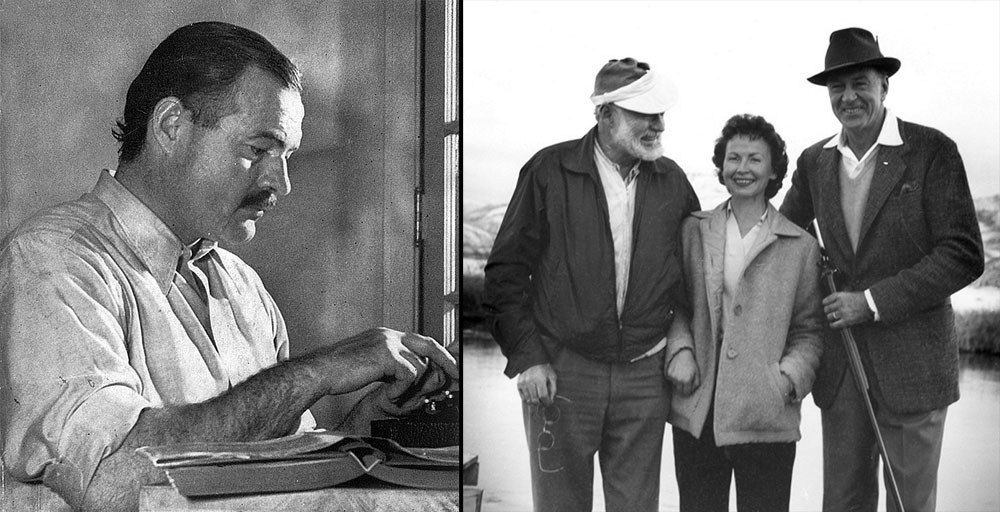
I should close and say, none of this applies to Sun Valley Resort, located in the adjacent city of Ketchum. The resort is well-known as a tower for tolerance and acceptance, where many of its employees are guest workers from foreign lands, with the intention for all of us to understand the many different cultures in the world in which we live today.
And if the liberal patriot Hemingway chose to live there, how bad could it really be.


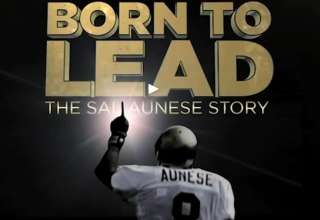
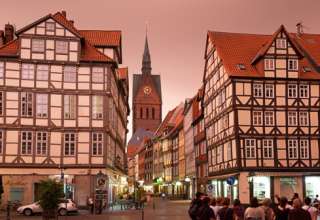
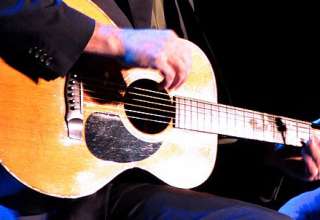

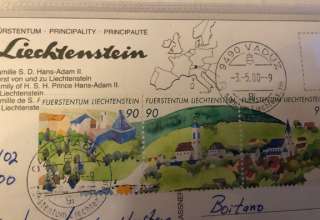

















Ed Boitano
April 23, 2024 at 6:07 pm
Hey, Commie Ringo… it seems your Cappuccino Liberal coffee has gone to your little liberal head. You ask why we have Bunker Homes in Boise, the land of freedom, is to keep guys like you out.
Ringo
April 23, 2024 at 6:23 pm
Hey, KKk Grand Wizard, forgive me for you didn’t leave your name. In my segment, that is my (Ringo) segment in Last Places that I Never Would visit again , I didn’t say Boise realtors sell ‘Bunker Homes.’ But you just did; so I believe you mean they really do have ‘Bunker Homes’ in Boise, which i understand that if I bought one my intention would be too keep me out, too. And thanks for taking the time to send me message, regardless if it’s good or bad. For it indicates that you’ve actually read my Cappuccino Liberal article that is clearly not over your head. RINGO
T-BOY ADMINISTRATION
June 19, 2024 at 12:26 pm
Please note: The “Hey, Commie Ringo” note was not written by Ed Boitano.
Apparently, it was written by a non “Cappuccino Liberal” who chose not to leave their name.
– T-Boy Administration
Larry
April 23, 2024 at 6:30 pm
Dear Cappuccino Liberal… Give KKk Grand Wizard a liberal a break. He’s a normal fella who just wants to live a normal life, hiking and biking the great outdoors of Boise, without tripping over your Cappuccino Liberal Head.
Muhammad
April 23, 2024 at 6:53 pm
Hey, Pascual… what’s it to you what we do in Iran. Your safe and comfy in the USA. We have problems but it’s not your concern. Muhammad – Tehran.
Raoul
April 26, 2024 at 4:37 pm
As long as you stay away from the US, the way you live your life is you decision. But I still wouldn’t want to visit.
Matt
April 26, 2024 at 4:13 pm
Richard, what a funny, frustrating and scary story about your cruise on the MV Sundancer. I’m glad you kept your cool for your mom and the other passengers! Did this experience keep you away from cruises for awhile?
Matt
Peggy
May 10, 2024 at 10:51 am
Good job, Ed! Very interesting and enlightening.
Lina, Upset in Spokane
June 19, 2024 at 12:15 pm
You’re right, Idaho is last place in the world where an person with Judeo/Christian would ever want to visit or revision. The first and last time I was in Boise, locals made me feel like a trespasser. There were cars with MEGA bumper stickers, and on t shirts and hats.
Can any Christian person ever consider Trump, who mocks the handicapped, calls others vulgar names and makes fun of the poor, every be called a Christian?
I have relatives ; one family with a beautiful mix- raced child: another husband and wife with two young children who are white – all raised with profound Judea-Christian values, who would never, ever step into such a racist and hateful state.
Even worse, I have relatives who actually boast about living in Boise and pretend to be Christians. I’ve read that Boise realtors are marketing ‘bunker’ homes for white people so that they can live with others who share the same values.
I say, leave them there. Let them live a life of confinement. Let them read the US Constitution. And they might realize that their values are not the same thing that makes our Republic Great!
Boise is not a nation that I choose to live.
Signed,
Lina, Upset in Spokane, Washington